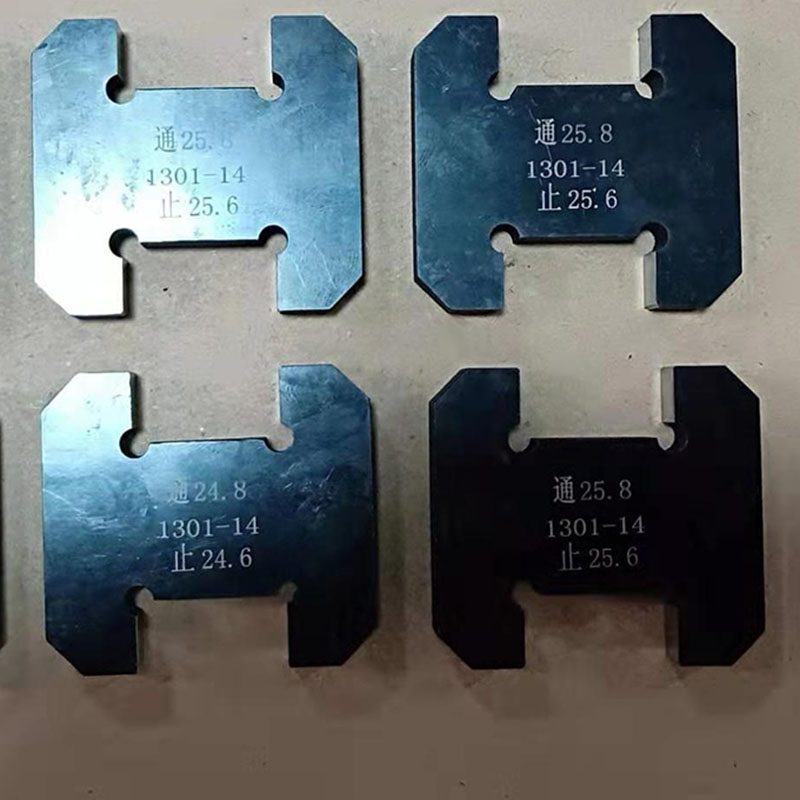12-р сар . 10, 2024 00:29 Back to list
Inspection Guidelines for Cast Iron Surface Plates in Manufacturing Environments
Cast Iron Inspection Surface Plates An Overview
In the realm of precision engineering and machining, accuracy is paramount. For this reason, cast iron inspection surface plates have earned their place as indispensable tools in various industries, including manufacturing, automotive, aerospace, and metalworking. These plates provide a flat reference surface against which measurements can be taken, ensuring that parts are produced to exact specifications.
What is a Cast Iron Inspection Surface Plate?
A cast iron inspection surface plate is a flat, level surface made from cast iron, typically used for layout, inspection, and assembly of workpieces. The flatness and rigidity of these plates enable them to serve as a reliable foundation for measuring equipment, gauges, and other tools. Their primary function is to provide a stable reference plane, allowing machinists and inspectors to achieve precise measurements.
Advantages of Cast Iron Surface Plates
1. Stability and Durability Cast iron possesses inherent stability due to its density and rigidity. This stability allows the inspection plates to maintain shape and resist deformation under heavy loads, making them ideal for use in demanding environments.
2. Thermal Properties Cast iron exhibits excellent thermal conductivity, which is beneficial for dissipating heat generated during tasks. This property helps maintain measurement accuracy, as temperature fluctuations could lead to material expansion and contraction.
3. Wear Resistance The surface of cast iron is hard and wear-resistant, enabling it to withstand the rigors of daily use without significant degradation. This longevity translates to cost savings over time, as the need for frequent replacements is reduced.
4. Affordability Compared to other materials, cast iron is relatively cost-effective, making it a popular choice for companies seeking reliable yet budget-friendly inspection tools.
Types of Cast Iron Inspection Surface Plates
cast iron inspection surface plate

Cast iron inspection surface plates come in various sizes and designs, catering to different applications. They can be classified into several types based on their intended use
1. Granite Surface Plates While not made of cast iron, granite plates are often compared with cast iron plates due to their exceptional flatness and stability. Those in precision machining might opt for granite plates for their higher cost but superior performance.
2. Standard Plates These plates are designed for general inspection tasks and feature a flat surface ideal for layout work and component checking.
3. Toolmaker's Plates These are smaller plates with a higher degree of accuracy and are designed specifically for toolmaking and intricate layout work.
4. Master Plates Used for calibration purposes, master plates provide a known standard for measuring other components and tools.
Maintenance and Care
To ensure the longevity and accuracy of cast iron inspection surface plates, proper maintenance is essential. Regular cleaning with non-abrasive materials and the application of protective coatings can prevent rust and wear. Additionally, periodic checks for flatness and surface condition should be performed to maintain precise measurements.
Conclusion
Cast iron inspection surface plates are vital components in the precision engineering industry, providing an essential foundation for accurate measurements. Their inherent stability, durability, and cost-effectiveness make them a preferred choice for professionals across various sectors. By understanding the different types of surface plates and the importance of maintenance, manufacturers and engineers can ensure their tools remain in peak condition, aiding in the production of high-quality components and assemblies. In an industry where precision is non-negotiable, cast iron inspection surface plates undoubtedly play a pivotal role in achieving excellence.
-
Why Metric Trapezoidal Thread is Ideal for Precision Motion ControlNewsAug.05,2025
-
The Unique Properties of a Block of Granite for Industrial UseNewsAug.05,2025
-
The Role of Flanged Y Strainers in Preventing Pipeline ClogsNewsAug.05,2025
-
The Importance of Regular Calibration for Master Ring GagesNewsAug.05,2025
-
How a Cast Iron Surface Table Enhances Accuracy in ManufacturingNewsAug.05,2025
-
Comparing Different Check Valve Types for Optimal Flow ControlNewsAug.05,2025
Related PRODUCTS









